What is Contextual Framework (And how do i build them myself)? In Blackboard Fridays last episode 134, Jacob talks about Commercial Vision and the Client Journey. Need this implemented into your business? Talk to the international business advisor who can do exactly that – Contact Jacob, Learn More, or Subscribe for Updates.
Who is Jacob Aldridge, Business Coach?
“The smart and quirky advisor who gets sh!t done in business.”
Since April 2006, I’ve been an international business advisor providing bespoke solutions for privately-owned businesses with 12-96 employees.
At this stage you have proven your business model, but you’re struggling to turn aspirations into day-to-day reality. You are still responsible for all 28 areas of your business, but you don’t have the time or budget to hire 28 different experts.
You need 1 person you can trust who can show you how everything in your business is connected, and which areas to prioritise first.
That’s me.
Learn more here. Or Let’s chat.
Transcript
Welcome to the Final Episode of Blackboard Fridays.
In 2016 alongside businessDEPOT, I created Blackboard Fridays to give business owners and business leaders at least 5 minutes every Friday morning where you could work on your business, not in your business.
In 2019 and 134 episodes later, I went on extended part-time paternity leave and we made the decision to wrap up the series – rather than sending out videos with decreasing insight and value. With very few gaps, I feel we managed to create a comprehensive business system to help address any of the key issues or opportunities that may arise in your organization in the future.
Insight You Can Re-Watch Over and Over
More importantly, I created these in a bite-sized way that allows you to watch them over and over again. As your business grows and evolves through its business lifecycle, you can find yourself returning to videos and seeing them with new eyes, new insight, gaining new solutions because they’ve been designed to help businesses at all of those different stages and to get to the heart of what you need.
When you’re ready for the lesson, the teacher will appear. And sometimes it’s the same teacher with the same video – but filtered through your changing business a new solution appears. This is why I will continue to repeat episodes in my Friday newsletters – business owners continue to find value.
Jacob Makes the Complex, Simple
The best feedback that I’ve received has been the many emails, phone calls and conversations with people who have said, “Jacob, you and the guest presenters on Blackboard Fridays managed to take a complex issue and make it simple, make it simple for me to understand and simple for me to make a final choice.“
So, for this, our very final episode of Blackboard Fridays, I wanted to show you how I do that. Because when you understand how to create your own contextual strategic framework, modelled on those I have shared on my blackboard, then the legacy of Blackboard Fridays becomes more than 12 hours of incredible video content. The legacy is a legion of business leaders like you around the world who have the blackboard inside them.
What is a Strategic Framework? What do I mean?
You’ve seen over 100 examples here on the blackboard, so let’s break it down. A strategic framework is designed to achieve two things:
- To help an individual bring awareness to the contextual choices that they have made in the past; and
- To make it easy for them to make a different choice moving forward.
This is then always enhanced with a visual model. The visual component is why we chose blackboards as a medium for these videos, not just a talking head, and a good visual will add some colour to help connect with people in an emotional level.
Contextual Choices???
You might recognize this diagram of an individual: where they are today, and where they want to get to.
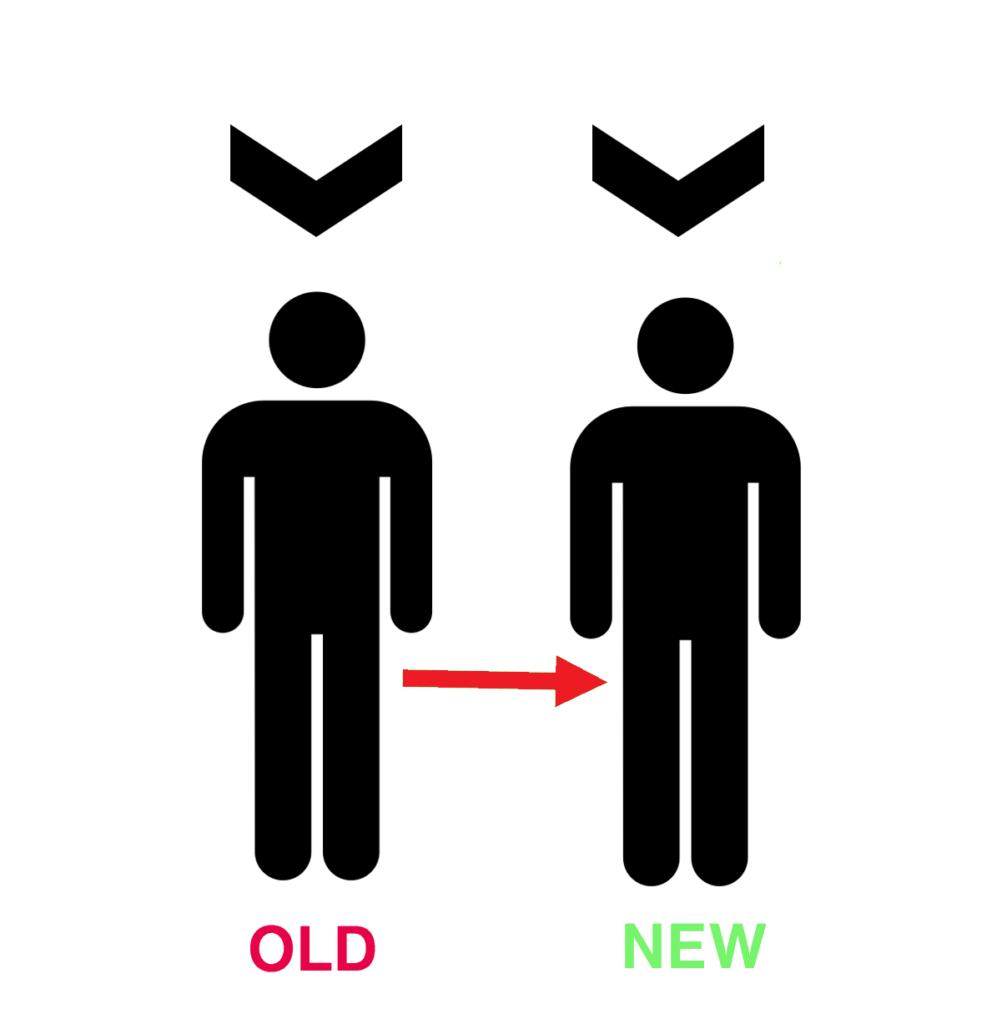
Right now, on the left hand side they’re doing whatever in the content; but they want a different outcome – they want different stuff going on for them and their business, the ‘new’ reality on the right.
Most business strategy sessions, conversations, podcasts, conferences, an awful lot of consultants keep their focus in the content space. They try and take all of the stuff, maybe they categorise it, maybe they create lists to make it feel like it’s being reduced … but all that does is rearrange deckchairs on a sinking ship, it’s putting lipstick on your stuff but ultimately keeping you stuffed.
You don’t need more stuff in your business.
You don’t need more content, you need less. And the only way to achieve that is to go up first from content (what we do) into context (why we do it).
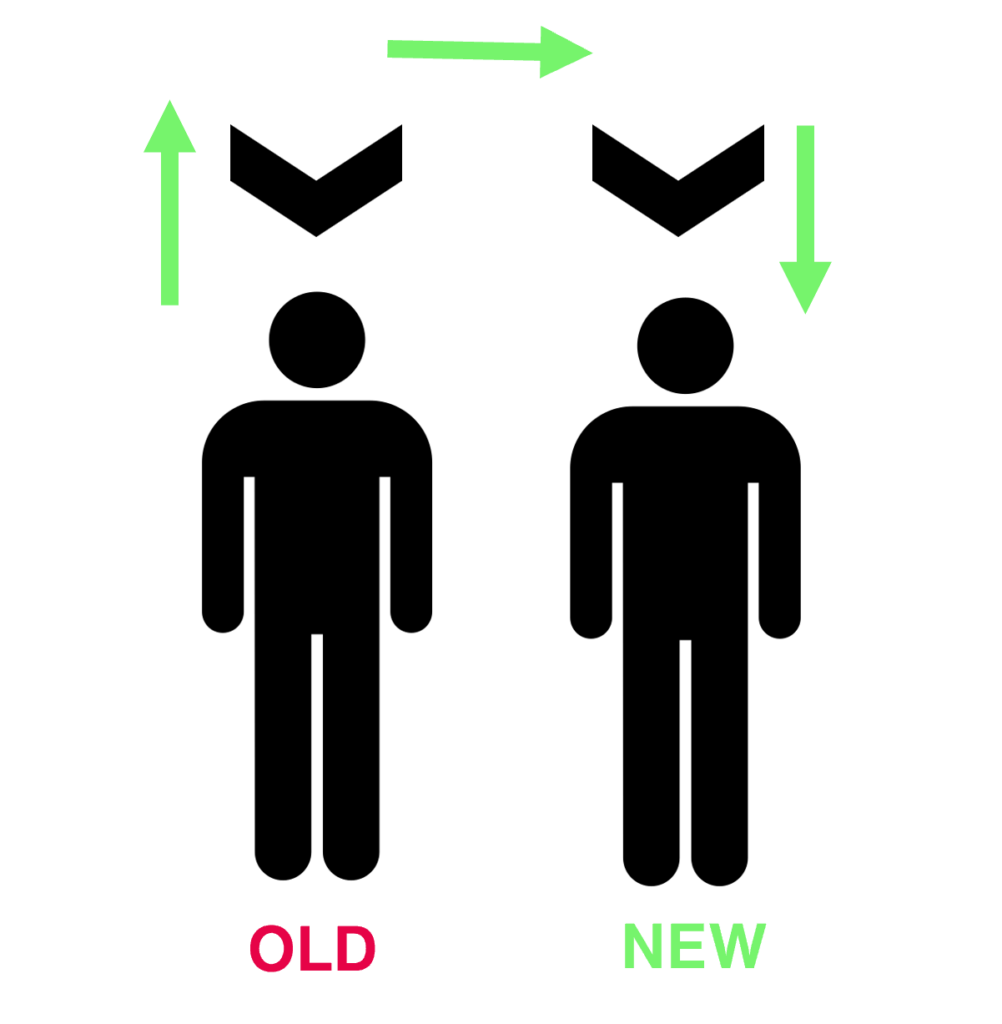
The Context above is your filters, the strategic decisions that you have made (consciously or not) in the past. Those past decisions run through your current context has created the content and outcome you have today … the content and outcome you want to change.
And so that’s the first amazing thing that a great strategic framework does: it gives you perspective, the helicopter view, the working on not in your business – it pulls you out of the endless content and brings your awareness up to the choices you’ve made, the context that you are running.
First Awareness, then Choice. For example…
Once you have awareness of today’s context it becomes so much easier to make a different choice. And that’s what you see in the green diagram above – awareness in the Old state of being, choosing a different context, and then running that context as a different decision-making filter to give you a different outcome.
Let me give you a specific example: Our capacity framework, the Capacity Engine.
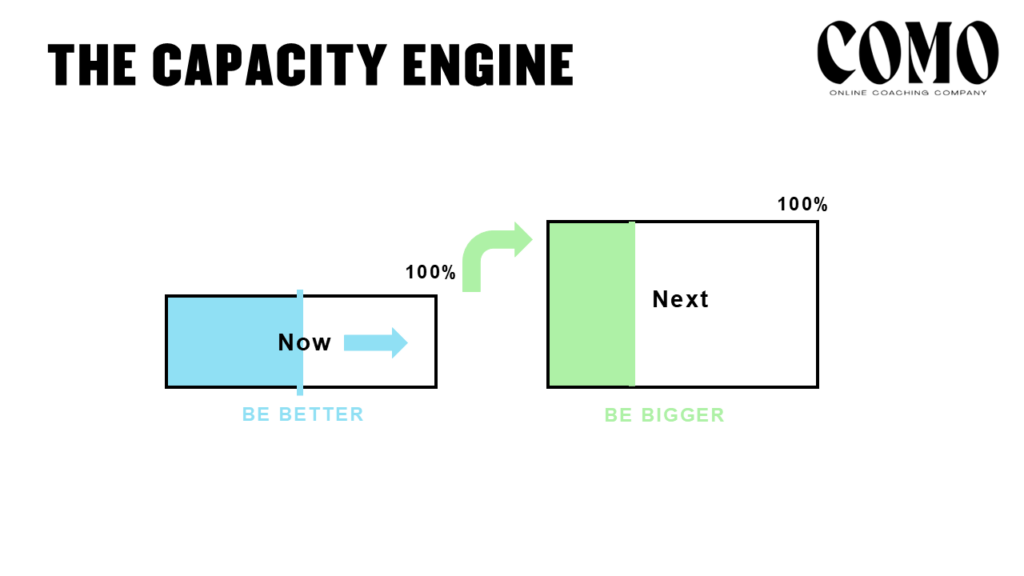
For most business owners, “STRATEGY” is lots and lots of ideas, some well researched, others more spontaneous, and endless list of stuff that can help you business grow. Make no mistake, I can come in to your business and bring even more stuff – but that would not help you with your strategy.
You need something simple, something that cuts to the heart of why you’re doing what you’re doing. The Capacity Framework makes that very, very simple.
Of the million things you could be doing your business, the Capacity Engine makes it clear that you have just. one. choice. Right now, do you need to Be Better in your existing engine OR do you need to Be Bigger and grow your business into a bigger engine?
That simple contextual choice helps cut away a lot of the noise in the content. Knowing the context options you have will improve your decisions as a business leader – when you or a team member have a great idea to ‘Be Bigger’, you don’t even need to entertain it as an immediate option when you’re running a context of ‘Be Better’.
That’s the power of a great strategic framework. To recap:
- Helps an individual bring awareness to the contextual choices that they have made in the past;
- Makes it easy to make a different choice moving forward;
- Enhanced with a visual model.
So simple, it’s something that you can do. In fact, it’s something you’re probably already doing.
Profit From Your Own Contextual Framework
If you think about your business, your clients, your team: you exist to take people from the OLD person on the left who has a pain, challenge, opportunity … over to the NEW person on the right where that pain has been solved, that opportunity has been realised, where they are more empowered to create the life, the business that they’re looking to achieve.
The process that you have that you take them on, that’s a strategic framework.
If it’s consistent, if it’s repeatable, if it’s documented, that’s a strategic framework.
If you can map out the specific steps that they need to go through in the process, that’s a strategic framework.
Most importantly, for your clients: Is there a key decision that they need to make? Is there something that they’re doing with their life that they need to fundamentally shift to get the outcome that they want? Do you have a process, a diagram, a story to help them to do that?
This is what makes a great contextual strategic framework that will help your clients … and by extension, the revenue, profitability, and fun factor in your business:
- What is the key decision they need to make to begin? How do you bring them to awareness (and then acknowledgement) that their current context isn’t working for them, and that they can change?
- What is the process for their change? To build your frameworks, you may need to list these steps in detail, even though the detail is unlikely to make the final version.
- How can you represent that journey visually with colour? Play around with ideas, draw and doodle, or (if you must) look at existing diagrams in everything from Microsoft Word to Canva to find something that you can use to explain the journey. The more unique the better.
- Can you use that framework as an emotional anchor that holds them to their commitment through the whole transition? Sometimes the framework only helps shift that contextual filter, and that’s great. Other times it can show a lengthy process – for example, taking your client through a contentious divorce – so you can use the framework to plan ahead and remind them of where they are along the way.
If you can achieve that with the framework, and help your client to recognize why they’re creating what they’ve got at the moment and what that new choice might be, you will accelerate their outcomes, you will stand out in the business world, you will be memorable and your team will be able to repeat it because they will be able to take that framework and the context and not have to memorize all of your content.
One compelling contextual framework can change your whole business. And I have a lot of fun building these with clients, because they’re an opportunity to distil wisdom into something more than process … into intellectual property that has power and value.
Just take a look at the core Frameworks from Como Business Coaching’s contextual business plan – a series of core questions that, when explained using a contextual framework, create rapid awareness and change.

Each of these core contextual frameworks is discussed in at least one Blackboard Fridays video – most more than once, because they are designed with the full implementation journey in mind. A reminder that you can view the Complete Blackboard Fridays video collection on my website here.
The legacy from Blackboard Fridays, however, is more than just the videos we’ve created. I’ve been incredibly privileged to have the opportunity to share a whole lot of my thoughts and insights and stories with you over all of these episodes.
Your choice now is to continue to embrace Blackboard Fridays in your business. Take those lessons, when the time is right take all of our pretty drawings and diagrams into your business and your team to create the business and life you dream of.
And then embody these for yourself – so that I can pass this chalk-sized baton over to you, and even though this is the final episode of Blackboard Fridays I can wrap it up knowing that the blackboard lives on in all of you.
Next Steps
Want to learn more about how this can apply to your business? It costs nothing to chat:
- Email me jacob@jacobaldridge.com (I read them all)
- Call, Text, or WhatsApp me +61 427 151 181
- Or just Subscribe https://jacobaldridge.com/about/subscribe-to-jacob-aldridge-com/ to stay in touch
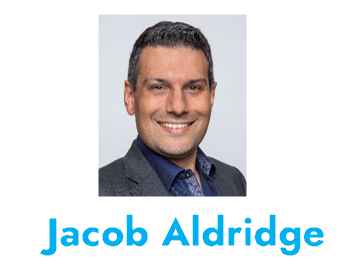

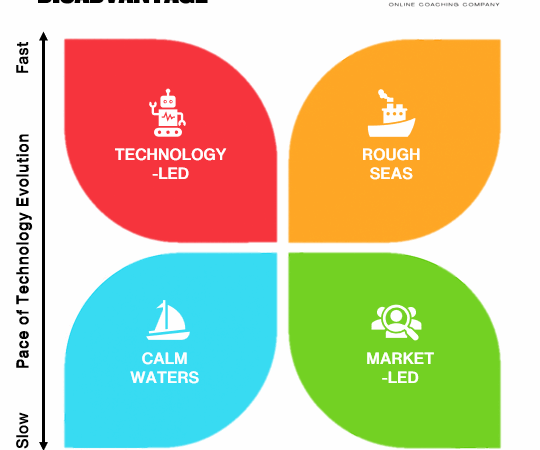


[…] Episode 134, What is a Contextual Framework (And how do I build them myself)? – https://jacobaldridge.com/business/what-is-a-contextual-framework-and-how-do-i-build-them-myself/ […]